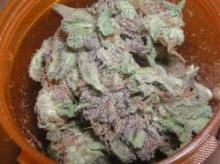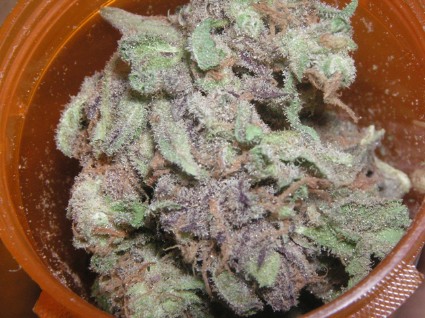User login
The development of a purified oral liquid formulation of a nonpsychoactive molecule found in marijuana, cannabidiol, for the treatment of drug-resistant epilepsy received a boost in winning orphan drug designations from the Food and Drug Administration for the indications of treating patients with Dravet and Lennox-Gastaut syndromes.
GW Pharmaceuticals, which is developing the purified cannabidiol product, so far has several trials slated to test the refined cannabidiol product in patients with Dravet syndrome. The company also received permission from the agency to allow U.S. physicians to treat up to 125 pediatric patients with pediatric epilepsy syndromes, including Dravet and Lennox-Gastaut, under an expanded access to investigational drugs protocol.
The orphan drug designation provides a 7-year exclusive marketing period in the United States for the first new drug application that receives approval for an indication to treat a rare disease or condition – generally a disease or condition that affects fewer than 200,000 individuals in the United States.
In a survey and other anecdotal reports, parents of children with drug-refractory epilepsy syndromes have reported successful treatment with cannabidiol-enriched marijuana. But little high-quality evidence is available about the efficacy and safety of cannabidiol in patients with Dravet, Lennox-Gastaux, and other pediatric epilepsy syndromes, as shown by a recent Cochrane Collaboration review of four randomized trials totaling 48 patients with epilepsy that found no adverse effects with 200-300 mg daily over short periods but did not report on the efficacy of the drug.
One double-blind, randomized placebo-controlled trial that GW has planned will test the safety of an oral solution containing either 25 mg/mL or 100 mg/mL cannabidiol during a 7-week period and single-dose pharmacokinetics with or without concomitant use of clobazam in 30 patients with Dravet syndrome.
Another double-blind, randomized placebo-controlled trial will test 25 mg/mL cannabidiol in 60 children and young adults with Dravet syndrome during a 12-week period to measure its effects on convulsive seizure frequency as the primary endpoint. Secondary endpoints will include the number of patients with a 50% or greater reduction in convulsive seizures from baseline, the change in nonconvulsive seizure frequency, the degree of sleep disruption, the degree of sleepiness, and caregiver impression of change.
The development of a purified oral liquid formulation of a nonpsychoactive molecule found in marijuana, cannabidiol, for the treatment of drug-resistant epilepsy received a boost in winning orphan drug designations from the Food and Drug Administration for the indications of treating patients with Dravet and Lennox-Gastaut syndromes.
GW Pharmaceuticals, which is developing the purified cannabidiol product, so far has several trials slated to test the refined cannabidiol product in patients with Dravet syndrome. The company also received permission from the agency to allow U.S. physicians to treat up to 125 pediatric patients with pediatric epilepsy syndromes, including Dravet and Lennox-Gastaut, under an expanded access to investigational drugs protocol.
The orphan drug designation provides a 7-year exclusive marketing period in the United States for the first new drug application that receives approval for an indication to treat a rare disease or condition – generally a disease or condition that affects fewer than 200,000 individuals in the United States.
In a survey and other anecdotal reports, parents of children with drug-refractory epilepsy syndromes have reported successful treatment with cannabidiol-enriched marijuana. But little high-quality evidence is available about the efficacy and safety of cannabidiol in patients with Dravet, Lennox-Gastaux, and other pediatric epilepsy syndromes, as shown by a recent Cochrane Collaboration review of four randomized trials totaling 48 patients with epilepsy that found no adverse effects with 200-300 mg daily over short periods but did not report on the efficacy of the drug.
One double-blind, randomized placebo-controlled trial that GW has planned will test the safety of an oral solution containing either 25 mg/mL or 100 mg/mL cannabidiol during a 7-week period and single-dose pharmacokinetics with or without concomitant use of clobazam in 30 patients with Dravet syndrome.
Another double-blind, randomized placebo-controlled trial will test 25 mg/mL cannabidiol in 60 children and young adults with Dravet syndrome during a 12-week period to measure its effects on convulsive seizure frequency as the primary endpoint. Secondary endpoints will include the number of patients with a 50% or greater reduction in convulsive seizures from baseline, the change in nonconvulsive seizure frequency, the degree of sleep disruption, the degree of sleepiness, and caregiver impression of change.
The development of a purified oral liquid formulation of a nonpsychoactive molecule found in marijuana, cannabidiol, for the treatment of drug-resistant epilepsy received a boost in winning orphan drug designations from the Food and Drug Administration for the indications of treating patients with Dravet and Lennox-Gastaut syndromes.
GW Pharmaceuticals, which is developing the purified cannabidiol product, so far has several trials slated to test the refined cannabidiol product in patients with Dravet syndrome. The company also received permission from the agency to allow U.S. physicians to treat up to 125 pediatric patients with pediatric epilepsy syndromes, including Dravet and Lennox-Gastaut, under an expanded access to investigational drugs protocol.
The orphan drug designation provides a 7-year exclusive marketing period in the United States for the first new drug application that receives approval for an indication to treat a rare disease or condition – generally a disease or condition that affects fewer than 200,000 individuals in the United States.
In a survey and other anecdotal reports, parents of children with drug-refractory epilepsy syndromes have reported successful treatment with cannabidiol-enriched marijuana. But little high-quality evidence is available about the efficacy and safety of cannabidiol in patients with Dravet, Lennox-Gastaux, and other pediatric epilepsy syndromes, as shown by a recent Cochrane Collaboration review of four randomized trials totaling 48 patients with epilepsy that found no adverse effects with 200-300 mg daily over short periods but did not report on the efficacy of the drug.
One double-blind, randomized placebo-controlled trial that GW has planned will test the safety of an oral solution containing either 25 mg/mL or 100 mg/mL cannabidiol during a 7-week period and single-dose pharmacokinetics with or without concomitant use of clobazam in 30 patients with Dravet syndrome.
Another double-blind, randomized placebo-controlled trial will test 25 mg/mL cannabidiol in 60 children and young adults with Dravet syndrome during a 12-week period to measure its effects on convulsive seizure frequency as the primary endpoint. Secondary endpoints will include the number of patients with a 50% or greater reduction in convulsive seizures from baseline, the change in nonconvulsive seizure frequency, the degree of sleep disruption, the degree of sleepiness, and caregiver impression of change.

